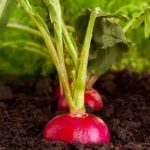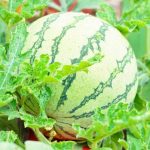Peat moss is a popular choice for many vegetable gardeners when it comes to preparing soil for planting. This natural, organic material has numerous benefits and provides an ideal environment for growing healthy, robust vegetables. Using peat moss in vegetable gardens can significantly improve the quality and yield of your produce, making it an essential component for any gardening enthusiast.
When it comes to creating the perfect environment for vegetable growth, peat moss offers a range of advantages. From improving soil structure to retaining moisture and providing essential nutrients, this natural resource plays a crucial role in the success of any vegetable garden. In this article, we will explore the benefits of using peat moss in vegetable gardens and how to properly integrate it into your gardening routine.
Whether you are a seasoned gardener or just starting out with your vegetable garden, understanding how to effectively use peat moss can make a significant difference in the health and abundance of your crops. From selecting the best types of vegetables to grow with peat moss to maintaining optimal moisture levels, we will provide you with all the necessary information to maximize your vegetable garden’s success with this invaluable resource.
Let’s delve into the world of peat moss and discover how you can elevate your vegetable gardening experience.
Benefits of Using Peat Moss in Vegetable Gardens
Improved Soil Structure and Aeration
Peat moss is known for its ability to improve soil structure and promote aeration in vegetable gardens. When mixed into the soil, peat moss helps to loosen dense, compacted soils, making it easier for plant roots to penetrate and access nutrients. This enhanced soil structure also allows for better water drainage, reducing the risk of waterlogged roots which can lead to rot or disease in vegetable plants.
Enhanced Moisture Retention
One of the key benefits of using peat moss in vegetable gardens is its ability to retain moisture. Peat moss has a high water-retention capacity, which is especially beneficial for vegetables that require consistent moisture levels, such as tomatoes and peppers. By incorporating peat moss into the soil, gardeners can reduce the frequency of watering while ensuring that their vegetable plants have access to adequate moisture during dry periods.
Acidic pH Level Adjustment
Many vegetables thrive in slightly acidic soil conditions, and peat moss can help achieve the ideal pH level for optimal growth. Peat moss has naturally acidic properties, making it an excellent choice for vegetables like potatoes, radishes, and carrots that prefer a lower pH range. By adding peat moss to the soil, gardeners can create an environment that is more conducive to the successful cultivation of these acid-loving vegetables.
Overall, the use of peat moss in vegetable gardens offers several compelling benefits that contribute to improved soil quality and overall plant health. From enhancing soil structure and moisture retention to adjusting pH levels, peat moss can play a valuable role in optimizing growing conditions for a wide range of vegetable crops.
How to Prepare Soil With Peat Moss for Vegetable Gardening
When preparing soil with peat moss for vegetable gardening, it is important to take into account the specific needs of your plants and the characteristics of the peat moss itself. Here are some steps to follow when incorporating peat moss into your vegetable garden soil:
1. Test your soil: Before adding peat moss, it’s essential to know the pH and composition of your garden soil. You can do this by using a simple at-home testing kit or by sending a sample to a professional laboratory. Peat moss tends to be acidic, so if your soil already has a low pH, you may want to consider alternative amendments.
2. Calculate the amount needed: The general recommendation is to use no more than 1/3 peat moss in your soil mixture. Calculate the amount needed based on the size of your garden and the condition of your soil.
3. Mix thoroughly: Once you have determined the appropriate amount of peat moss, incorporate it evenly into your soil. Use a shovel or tiller to ensure that the peat moss is well mixed with the existing soil.
By following these steps, you can effectively prepare your soil with peat moss for vegetable gardening and create an environment that promotes healthy plant growth.
In addition to proper preparation, it is crucial to understand which types of vegetables thrive when grown with peat moss in their soil. Some examples include:
These vegetables have been found to benefit from the moisture retention and improved drainage provided by peat moss, leading to healthier and more productive plants in many cases.
Best Types of Vegetables to Grow With Peat Moss
When it comes to using peat moss for vegetable gardens, there are certain types of vegetables that thrive particularly well in soil amended with this organic material. Whether you have a small backyard garden or a larger plot, incorporating peat moss can improve the overall health and yield of your vegetable crops.
Leafy Greens
Leafy greens such as lettuce, spinach, and kale benefit greatly from soil enriched with peat moss. The moisture-retaining properties of peat moss help these vegetables stay hydrated and avoid wilting, especially during hot summer months.
Root Vegetables
Root vegetables like carrots, radishes, and potatoes also do well when grown in soil amended with peat moss. The loose and aerated structure of peat moss allows these vegetables to develop healthy root systems without being hindered by compacted soil.
Tomatoes and Peppers
Tomatoes and peppers thrive in soil that is slightly acidic, making them perfect candidates for growth in peat moss-amended soil. The added acidity from the peat moss can help these plants absorb essential nutrients more efficiently, leading to healthier and more productive crops.
By selecting the right types of vegetables to grow with peat moss, you can maximize the benefits of this organic material in your vegetable garden and enjoy an abundant harvest.
Tips for Maintaining Moisture Levels With Peat Moss in Vegetable Gardens
Peat moss is a popular choice for vegetable gardeners looking to maintain proper moisture levels in their soil. This organic material has excellent water retention properties, making it an ideal addition to any garden bed. However, in order to make the most of peat moss for vegetable gardens, it’s important to follow some key tips for maintaining moisture levels.
One of the best ways to ensure that peat moss effectively retains moisture in your vegetable garden is to properly mix it into the soil. When preparing your garden bed, incorporate peat moss evenly throughout the soil. This will help create a consistent environment for your vegetables, allowing them to access water as needed.
Another tip for maintaining moisture levels with peat moss is to regularly check the soil moisture and adjust watering accordingly. While peat moss can help retain water, it’s still important to monitor the moisture levels and provide additional water when necessary, especially during hot and dry periods.
Additionally, consider using a layer of mulch on top of the soil to further aid in moisture retention. Mulch helps reduce evaporation and prevents water from quickly escaping from the soil, working hand in hand with peat moss to keep your vegetable garden adequately hydrated.
| Tips for Maintaining Moisture Levels With Peat Moss | Vegetable Garden |
|---|---|
| Mix peat moss into the soil evenly | Properly prepare the garden bed |
| Regularly check soil moisture and adjust watering | Monitor hydration needs of vegetables |
| Use a layer of mulch on top of the soil | Aid in further moisture retention |
Potential Drawbacks of Using Peat Moss in Vegetable Gardens
While peat moss can provide numerous benefits to vegetable gardens, there are also potential drawbacks to consider before incorporating it into your gardening routine. It is important to weigh the pros and cons of using peat moss in order to make an informed decision for your garden.
Some potential drawbacks of using peat moss in vegetable gardens include:
1. Decreased pH levels: Peat moss is naturally acidic, which means it can decrease the pH level of the soil over time. This can be problematic for certain vegetables that prefer neutral or alkaline soil conditions.
2. Compaction: Peat moss has a tendency to compact over time, which can restrict root growth and water infiltration in the soil. This compaction can lead to poor drainage and insufficient aeration for vegetables, ultimately affecting their growth and yield.
3. Sustainability concerns: There are growing concerns about the environmental impact of harvesting peat moss, as it involves disrupting delicate ecosystems and releasing large amounts of carbon dioxide into the atmosphere. As a result, some gardeners may prefer to use more sustainable alternatives in their vegetable gardens.
In light of these potential drawbacks, it is important for gardeners to consider alternative options for improving soil quality and moisture retention in their vegetable gardens without relying solely on peat moss. By exploring other materials and techniques, gardeners can find solutions that address their specific gardening needs while minimizing any negative impacts associated with peat moss use.
Overall, being aware of both the advantages and disadvantages of using peat moss for vegetable gardens will allow gardeners to make well-informed decisions about how best to cultivate healthy and productive crops. Ultimately, weighing the potential drawbacks against the benefits will help ensure that a vegetable garden thrives with the addition of peat moss or with alternative methods designed to support plant growth successfully while maintaining environmentally friendly practices.
Alternatives to Peat Moss for Vegetable Gardens
While peat moss is a popular choice for many vegetable gardeners, there are also several alternatives that can be just as effective in improving soil quality and promoting healthy plant growth. One alternative to peat moss is coconut coir, which is a natural fiber extracted from the husk of coconuts. Coconut coir has similar properties to peat moss, such as its ability to retain moisture and improve soil structure, making it an excellent substitute.
Another alternative to peat moss is compost, which is made from decomposed organic matter such as food scraps, yard waste, and manure. Compost provides essential nutrients to the soil and improves its overall fertility, promoting vigorous growth in vegetable plants. Additionally, compost helps with moisture retention and can be used as a mulch around vegetable plants to conserve water and suppress weed growth.
Lastly, vermiculite and perlite are two lightweight minerals that can be used as substitutes for peat moss in vegetable gardens. Vermiculite has excellent water retention properties and helps aerate the soil, while perlite improves drainage and prevents soil compaction. Both minerals can be mixed with other organic materials to create a well-balanced growing medium for vegetables.
Overall, these alternatives offer vegetable gardeners diverse options for enhancing their soil without relying solely on peat moss. By considering these alternatives, gardeners can make informed decisions based on the specific needs of their vegetable crops and environmental impact considerations.
| Alternative | Properties |
|---|---|
| Coconut Coir | Retains moisture, improves soil structure |
| Compost | Provides nutrients, promotes fertility |
| Vermiculite/Perlite | Improves water retention/drainage |
Conclusion
In conclusion, it is clear that using peat moss in vegetable gardens can provide numerous benefits for gardeners. From improving soil structure and drainage to aiding in moisture retention, peat moss can significantly contribute to the success of a vegetable garden. By following the proper steps to prepare the soil with peat moss and selecting the best types of vegetables to grow with it, gardeners can experience higher yields and healthier plants.
While there are some potential drawbacks to using peat moss, such as its contribution to environmental degradation and its acidity levels, there are also alternative options available for those who are concerned about these issues. However, when used responsibly and in moderation, peat moss can be a valuable addition to any vegetable garden.
Overall, by understanding the benefits of using peat moss in vegetable gardens and taking the necessary steps to maintain moisture levels and address any potential drawbacks, gardeners can maximize their success. With proper care and attention, incorporating peat moss into vegetable gardening practices can lead to bountiful harvests and thriving plants.
Frequently Asked Questions
Should You Put Peat Moss in Your Vegetable Garden?
Peat moss can be beneficial in a vegetable garden as it helps improve soil structure, retains moisture, and increases the acidic content of the soil. However, it should be used in moderation due to its high acidity.
Do Tomatoes Like Peat Moss?
Tomatoes generally thrive in well-draining, nutrient-rich soil. While peat moss can aid in moisture retention and root development for tomatoes, it is important not to overdo it since tomatoes prefer slightly acidic, rather than highly acidic, soil conditions.
What Is the Ratio of Peat Moss to Topsoil for Vegetable Garden?
The ideal ratio of peat moss to topsoil for a vegetable garden can vary depending on various factors such as the existing soil composition and the specific needs of the vegetables being grown. Generally, a good starting point is to mix equal parts peat moss and topsoil before amending further based on plant needs and soil test results.

If you’re looking to get into vegetable gardening, or are just looking for some tips on how to make your current garden better, then you’ve come to the right place! My name is Ethel and I have been gardening for years. In this blog, I’m going to share with you some of my best tips on how to create a successful vegetable garden.





